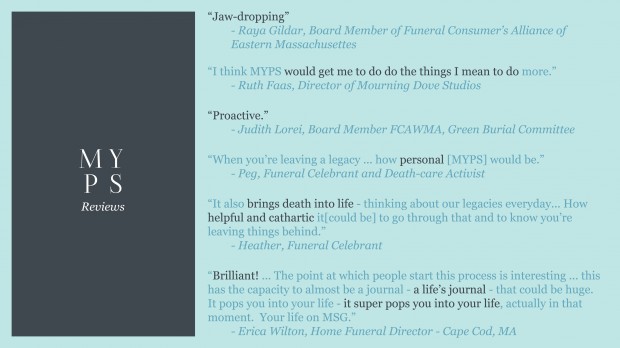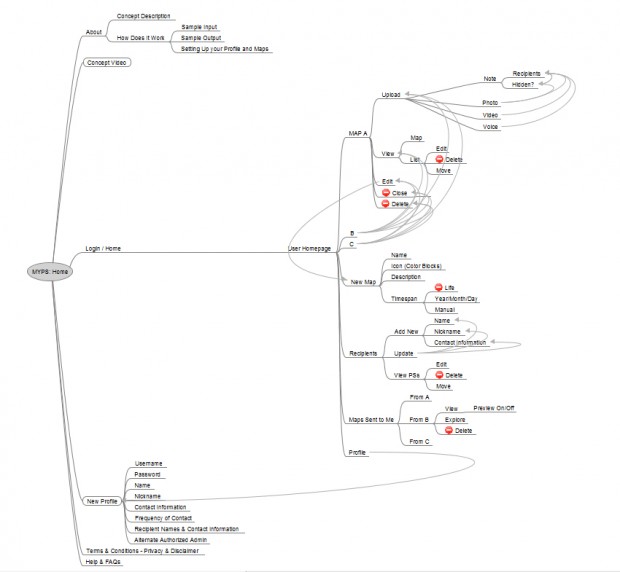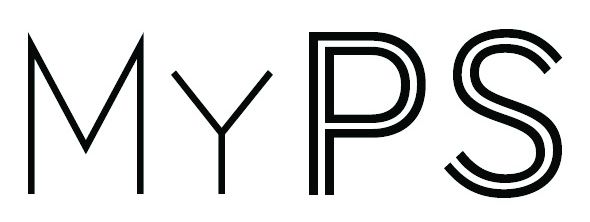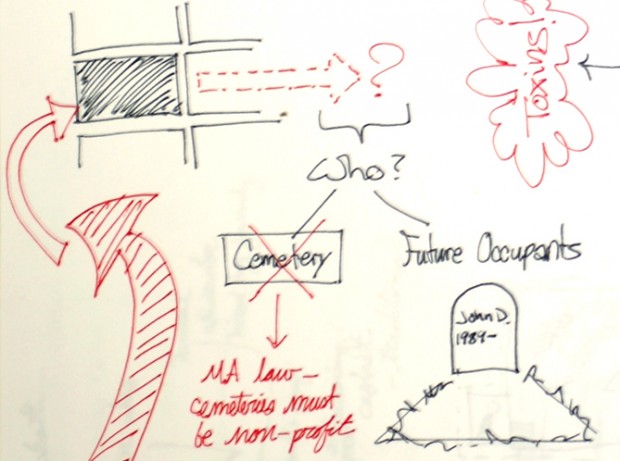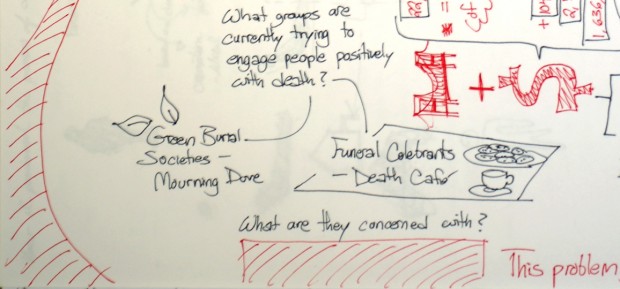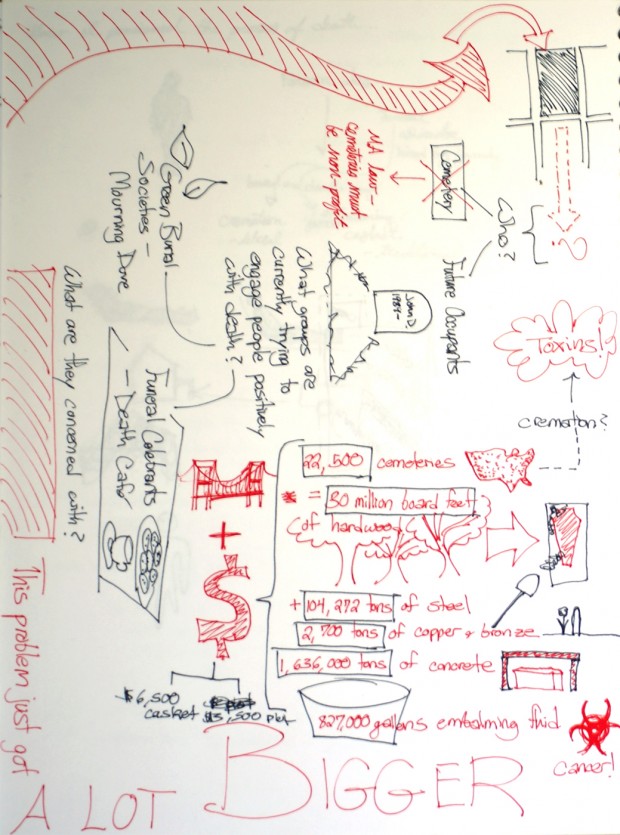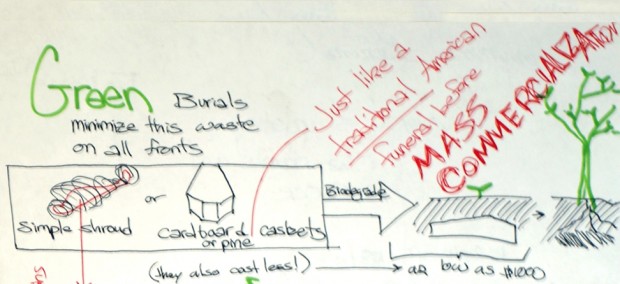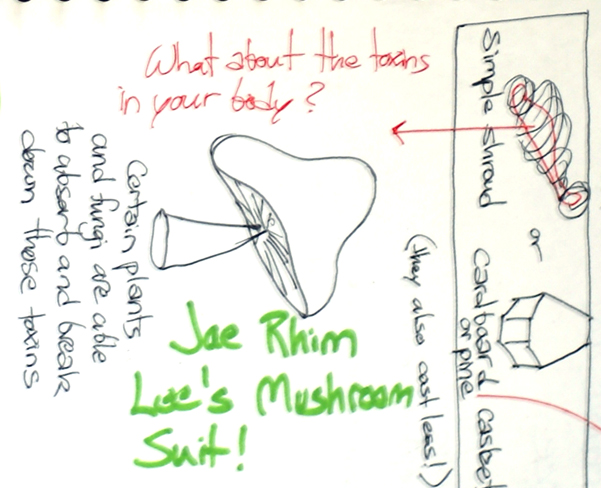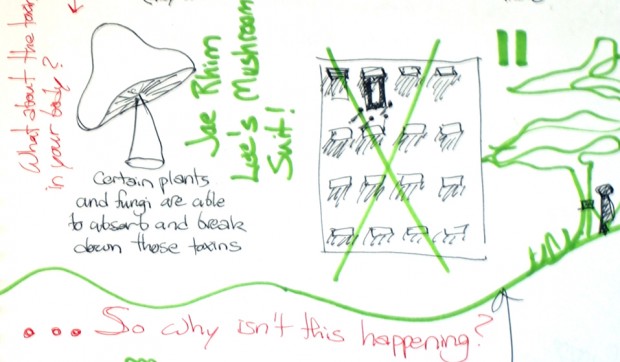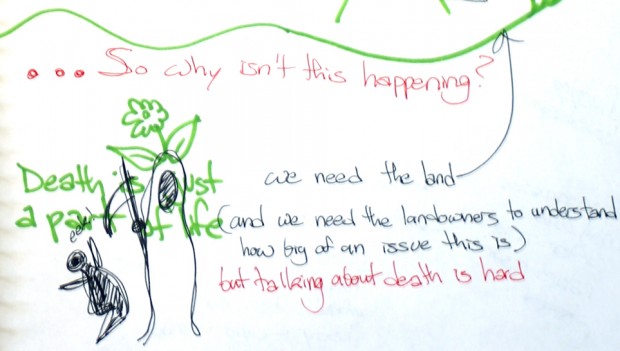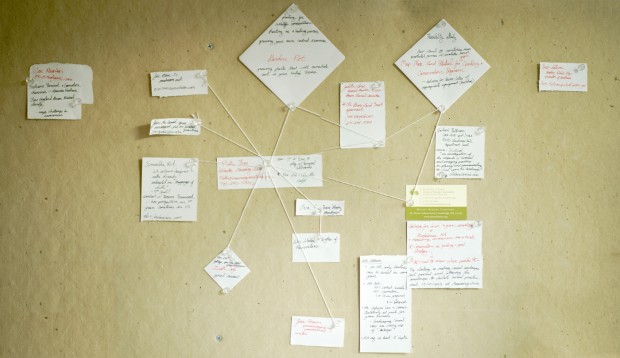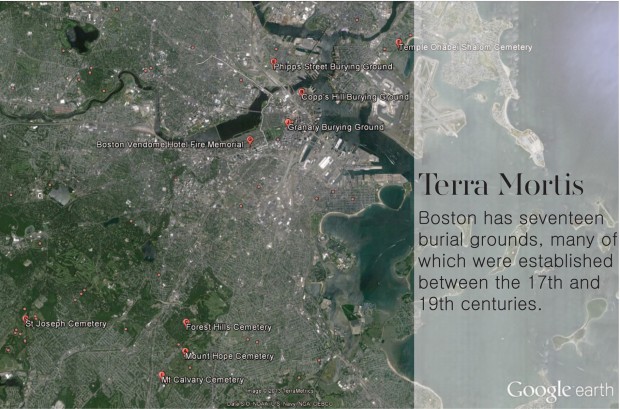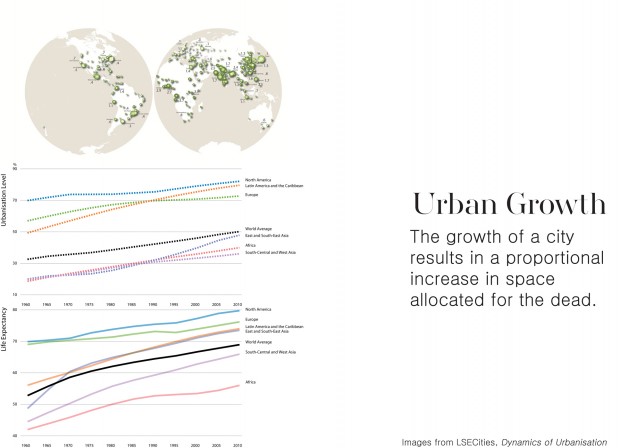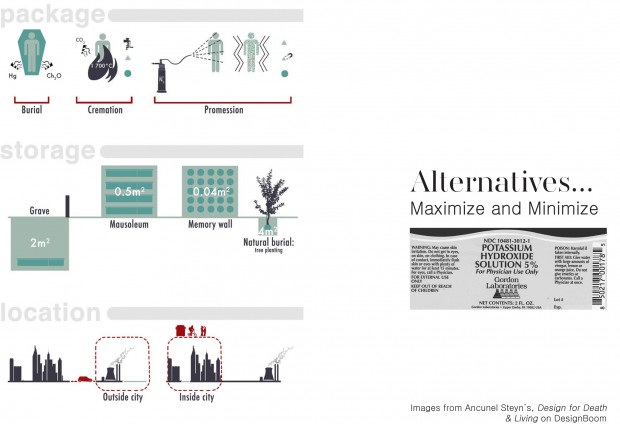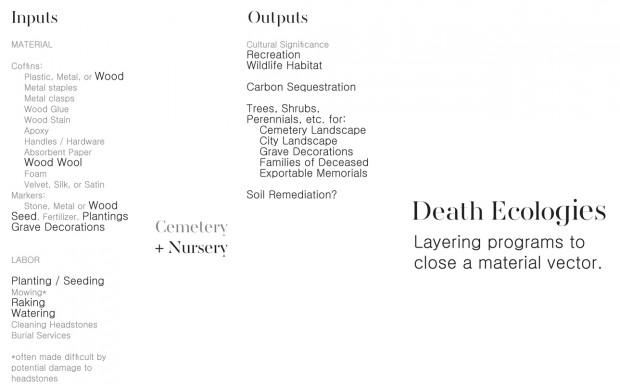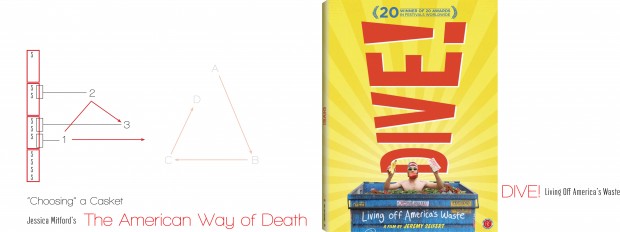Networked Urbanism
design thinking initiatives for a better urban life
apps awareness bahrain bike climate culture Death design digital donations economy education energy extreme Extreme climate funerals georeference GSD Harvard interaction Krystelle mapping market middle east mobility Network networkedurbanism nurra nurraempathy placemaking Public public space resources Responsivedesign social social market Space time time management ucjc visitor void waste water Ziyi
networkedurbanism
I was invited to participate in a networking event by Ruth Faas, my main contact in Boston’s death-care industry, on December 8th in Arlington, MA. Attendees included board members of both the Eastern and Western Massachusetts Funeral Consumer’s Alliances, Grief Therapists, Artists, Funeral Celebrants and Funeral Directors. Here’s what they had to say about MYPS…
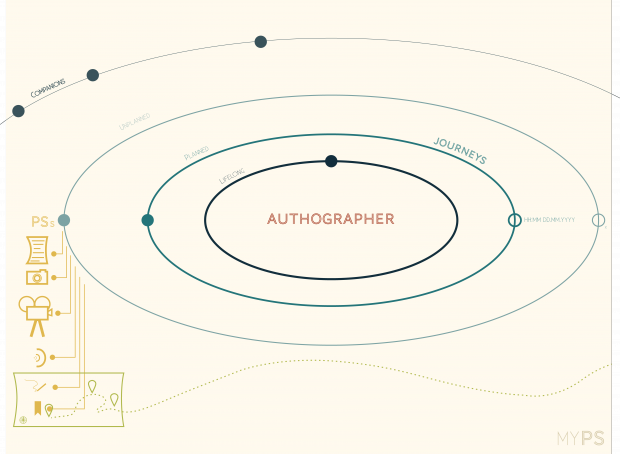
A graphic representation of the structure and terminology of the MYPS application.
When using MYPS, the authographer (author + cartographer) links each PS they upload to a “Journey”, which will be compiled into a map with the geotagged messages and sent to the listed recipients. The preferences for each journey are set up by the authographer when the journey is initiated, including the contact information for the recipients and the intended length of the journey. The lifelong journey cannot be closed until the entire account is deactivated; the planned journeys have established dates when they will close, and the unplanned journeys can be closed manually at any time. Your companions are the journeys fellow authographers have sent to you.
Deactivation and recipient contact information are controlled and updated, respectively, through periodic emails. An e-prompt will ask you once every 3 months to update your contact information, your recipients’ contact information, and to confirm your continued use. If the authographer does not respond to 3 successive prompts, the entire account will automatically deactivate. This can be disabled, temporarily, if the authographer does not plan on having e-mail or internet access for an extended period of time.
Each PS can be a note, a photo, a video, a recording, a sketch or a placeholder, which will allow you to revisit the PS and add a message later off-site, or simply remain as a “place” on the map.
The Concept…
My Postscript is a cloud to ground cartographic composer that allows an individual to gradually create a map of messages for their loved ones to discover after the individual is gone. The process is incremental, both in design and delivery, so senders and recipients can handle the farewells at their own pace. A PS can be a note, picture or video and as small as a tweet or as long as a letter. Each PS is geolocated so recipients can visit (or happen upon) the place where the message was left for them and feel that much more connected to the sender.
The Prototype – MYPS v0.1 …
If you are interested in helping me develop MYPS, please send me an e-mail with your name, your intended recipients’ names and whichever of the following you are comfortable providing:
– your recipients’ contact information (e-mail or snail mail) if you want me to send them the maps directly
– your age (can be approximate)
– gender
– nationality
– current city
– religious, spiritual or philosophical affiliation
– any other information you think is relevant to your use of this prototype (are you tech savy? tech terrified? pragmatic? a hopeless romantic?)
Once I have your information I will send you the username and password for the blog so you can start posting. For each note, picture or video simply add a tag with the intended recipient(s) and as specific a location as you can give. When the trial is done I will compile the maps and send them to you or to the recipients if you provided their contact information.
Ideally these will be real messages for real people so that I can get a better sense of how MYPS would be used in the real world. However, silly messages to fake people, silly messages to actual people and sincere messages to fake people are also acceptable (and may help me add humor to my final presentation at the end of the semester).
** This is currently in a blog format so that the posts are easily editable and so your input format will be as close to the final version’s input format as possible – if you have privacy concerns let me know so you can e-mail the PS’s to me and I will keep them solely on my harddrive till the trial is over. Also, the Tumblr is not searchable so only other reviewers will see the content**
Feedback or questions are welcome at anytime through email or as blog posts. At the end of the trial I will send participants a short, optional survey to see how I can improve MYPS for version 0.2
For those of you with smartphones, iPads, etc…
Feel free to post PS’s to whatever platforms you already use (twitter, instagram, facebook, flikr) with #myps2u and I will add them to the blog. Please make sure to tell me what platforms you use beforehand.
For those of you who want a more private option or do not blog, tweet, instagram, etc…
E-mail me your PS’s with the subject line MYPS and I will add them to the blog for you. Make sure to include an approximate location for each PS and an intended recipient. For example, “to Buzz Aldrin: Remember when we became the first people to walk on the moon – those were some good times! Location: West Crater, Earth’s Moon.”
Thank you for your help and feedback. Hope you enjoy MYPS v0.1
Jennifer Lee Mills
jmills@gsd.harvard.edu
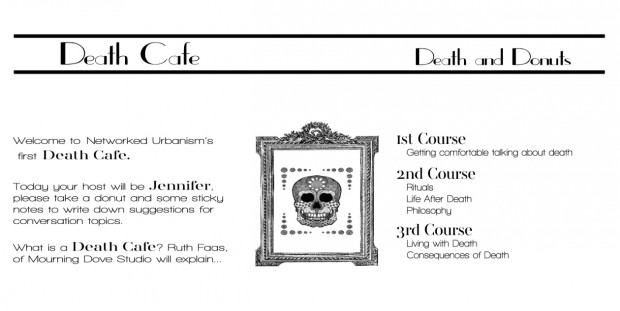 Although mortality is humanity’s common ground, the subject of death has become taboo and the spaces of death are treated with morose reverence that often excludes them from the public realm and society’s consciousness. Cemeteries no longer function as vital urban spaces; they are Terra Mortis, dead land, set aside to memorialize our loss. However, even more disturbing than this underutilized land is the waste generated by postmortem processing. Society’s efforts to produce an illusion of permanence after death has resulted in an industry that defies, consumes and contaminates nature at the cost of public health, environmental security, urban green space and our overall spiritual well being. My project asks if we can transform cemeteries into a common, fertile ground that allows people to understand death as an integral part of life. We will begin the session with a Death Cafe in the tradition of Funeral Celebrants – be ready for Death & Donuts!
Although mortality is humanity’s common ground, the subject of death has become taboo and the spaces of death are treated with morose reverence that often excludes them from the public realm and society’s consciousness. Cemeteries no longer function as vital urban spaces; they are Terra Mortis, dead land, set aside to memorialize our loss. However, even more disturbing than this underutilized land is the waste generated by postmortem processing. Society’s efforts to produce an illusion of permanence after death has resulted in an industry that defies, consumes and contaminates nature at the cost of public health, environmental security, urban green space and our overall spiritual well being. My project asks if we can transform cemeteries into a common, fertile ground that allows people to understand death as an integral part of life. We will begin the session with a Death Cafe in the tradition of Funeral Celebrants – be ready for Death & Donuts!
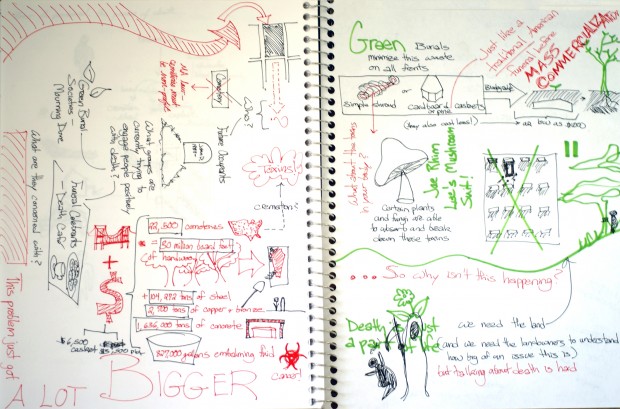
The waste produced by the funeral industry affects the economy, our natural resources, public health, city planning and our cultural misconceptions about death and tradition.
_-_-_-_-_-_-_-_-_-_-_-_-_-_-_-_-_-_-_-_-_-_-_-_-_-_-_-_-_-_-_-_-_-_-_-_-_-_-_-_-_-_-_-_-_-_-_
_-_-_-_-_-_-_-_-_-_-_-_-_-_-_-_-_-_-_-_-_-_-_-_-_-_-_-_-_-_-_-_-_-_-_-_-_-_-_-_-_-_-_-_-_-_-_
_-_-_-_-_-_-_-_-_-_-_-_-_-_-_-_-_-_-_-_-_-_-_-_-_-_-_-_-_-_-_-_-_-_-_-_-_-_-_-_-_-_-_-_-_-_-_
_-_-_-_-_-_-_-_-_-_-_-_-_-_-_-_-_-_-_-_-_-_-_-_-_-_-_-_-_-_-_-_-_-_-_-_-_-_-_-_-_-_-_-_-_-_-_
_-_-_-_-_-_-_-_-_-_-_-_-_-_-_-_-_-_-_-_-_-_-_-_-_-_-_-_-_-_-_-_-_-_-_-_-_-_-_-_-_-_-_-_-_-_-_
_-_-_-_-_-_-_-_-_-_-_-_-_-_-_-_-_-_-_-_-_-_-_-_-_-_-_-_-_-_-_-_-_-_-_-_-_-_-_-_-_-_-_-_-_-_-_
_-_-_-_-_-_-_-_-_-_-_-_-_-_-_-_-_-_-_-_-_-_-_-_-_-_-_-_-_-_-_-_-_-_-_-_-_-_-_-_-_-_-_-_-_-_-_
_-_-_-_-_-_-_-_-_-_-_-_-_-_-_-_-_-_-_-_-_-_-_-_-_-_-_-_-_-_-_-_-_-_-_-_-_-_-_-_-_-_-_-_-_-_-_
The following are speculations on why people fear death and their body’s decay:
The Seventh Seal, Ingmar Bergman
Ingmar Bergman’s portrayal of death seems very classic, with his flowing black robes and intimidating features. The main character in the movie later states that he fears dying because he wants a guarantee that heaven awaits him.
The Hearse Song
Don’t you ever laugh as the hearse goes by,
For you may be the next one to die.
They wrap you up in a big white sheet
From your head down to your feet.
They put you in a big black box
And cover you up with dirt and rocks.
All goes well for about a week,
Then your coffin begins to leak.
The worms crawl in, the worms crawl out,
The worms play pinochle in your snout,
They eat your eyes, they eat your nose,
They eat the jelly between your toes.
A big green worm with rolling eyes
Crawls in your stomach and out your eyes.
Your stomach turns a slimy green,
And pus pours out like whipping cream.
You’ll spread it on a slice of bread,
And this is what you eat when you are dead.
This song was a popular “scary story” used to frighten friends at sleepovers. When my aunt explained that she wanted an airtight casket because the thought of worms eating her body terrified her, this is what came to mind. Through my conversations with people outside of the funeral industry I have found that many people do not understand the process of decomposition, especially the fact that it is inevitable. Many still operate under the misunderstanding that embalming preserves you for eternity, when, in fact, it merely used a highly toxic fluid to preserve your body for the short amount of time between your death and internment. Everything from your body to your “airtight casket” will eventually decay and return to the earth.
Cemeteries are at the center of a growing urban issue – with higher densities of the living we will inevitably face higher densities of the dead. However, while a number of designers and scientists have considered alternatives that either minimize the spatial requirements of human remains, suggest new dispersed, layered, digital or environmentally friendly typologies or combinations thereof, few have looked at the cemetery as part of a larger urban material ecology.
Thought provoking as the alternatives are, they can often inspire less thought and more provocation. The rituals of death are deeply ingrained and culturally significant, therefore, rethinking cemeteries requires designers to allow for traditional modes of mourning. Even if a significant portion of society were to accept the possibility that their bodies will be flash frozen and ground into a compostable powder, we already have a legacy of spatium mortus – land that is sacrosanct and untouchable (at least not without significant cultural and emotional backlash).
In response to this dilemma, I am proposing a layering of programs within cemetery grounds that goes beyond recreational use to turn cemeteries into productive spaces while maintaining respect for cultural norms. In simple terms a cemetery is a single-program urban space with specific material inputs, and no material output. However, that does not always have to be the case. By breaking down the underlying systems of cemeteries, the possibility of closing a material vector emerges.
Seeing as cemeteries are already organized into a field of plots with specialized and complicated maintenance regimes, the addition of a plant nursery is almost intuitive. While the growth of hardwoods necessary to close the container to container loop is a lengthy process, species with shorter growth schedules can be underplanted and either used within the cemetery or exported for profit. All the while the visitors and local ecosystem benefit from the well-studied beneficial effects of urban forests.
The film I will be presenting, Dive! Living Off America’s Waste, is actually about food waste in the US, as documented by an LA dumpster diver. The presentation slides below pull out the shocking statistics regarding the enormous waste of our food industry. The video relates to my larger research regarding the funeral industry in Massachusetts in that the narrator attempts to enact change at various points in the process from production to consumption to waste. My current efforts to map the network of postmortem processes in Massachusetts follows a similar logic – explore a variety of scales and points in the network to see where the most effective place for intervention is.
As a follow up I will present The American Way of Death, by Jessica Mitford. Written in 1963, this book is an expose of the inherent corruption in the funeral industry at that time. Many of the groups I am currently networking with, including the Funeral Consumer’s Alliance and Mourning Dove Studios, were established in reaction to Mitford’s research. She outlines with statistics, personal investigation and anecdotes the process by which funeral directors take advantage of grieving families to maximize profits. Mitford explains how funeral homes have formed monopolies against change by establishing relationships with casket manufacturers and cemeteries that guarantee the industry will work together to ensure their own financial success at the cost of the average consumer. Now consumer alliances have formed in many states to help people navigate the industry and protect their rights by providing information on burial laws and consumer friendly funeral homes. These organizations are currently leading the way towards more environmentally friendly burial options as well.
Dive! & The American Way of Death
After our work resume, here’s our video for VUOTIdiSardegna, the Social Database for abandoned places in Sardinia.
« Previous 1 2 3 4 Next »
